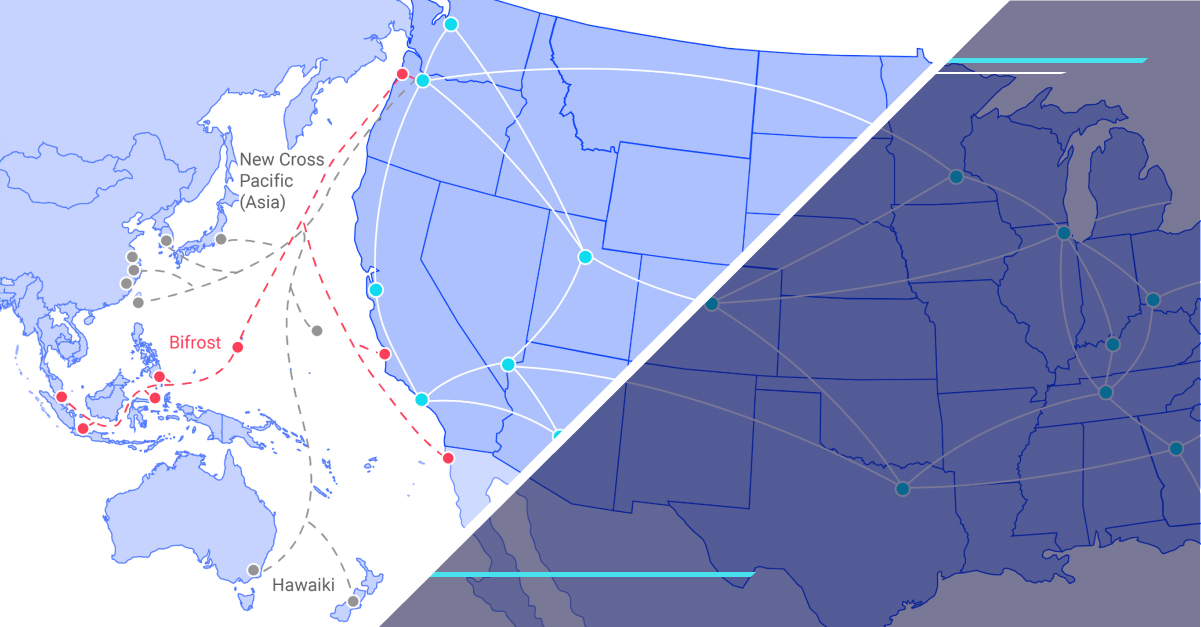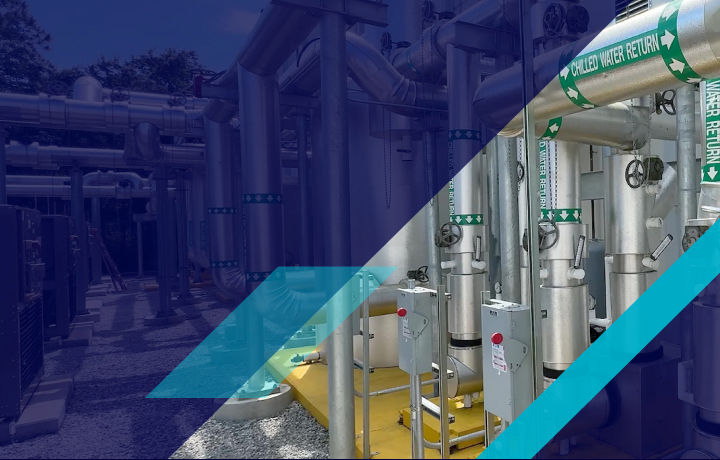What are Internet Exchange Points (IXPs) and why do they matter for interconnection?

An Internet Exchange Point is a location where networks connect to exchange Internet traffic directly. By bypassing longer, more expensive transit routes, IXPs help improve performance, reduce costs, and strengthen network reliability.
When your business depends on fast, stable internet connections, every millisecond counts. Knowing how IXPs work and how they fit into a broader interconnection strategy can help you make smarter decisions about keeping your network competitive.
What is an Internet Exchange Point (IXP)?
You can think of an IXP as a central meeting place for networks. Internet service providers, content delivery networks, cloud platforms, and enterprise networks all connect here to pass traffic more directly. This shortens the distance data needs to travel and avoids unnecessary handoffs.
How IXPs work
At the core of an IXP is high-speed switching equipment that connects all participating networks. Members establish “peering” connections with others in the exchange, allowing data to flow directly between networks instead of making multiple stops along the way. Many enterprises pair IXP access with SDN and data center interconnect so they can control routes, segment traffic, and scale capacity across sites and clouds.
The evolution of IXPs
In the early days of the Internet, IXPs connected only a small number of service providers. Today, they are critical hubs in the Internet's backbone, supporting the growth of cloud services, streaming platforms, and distributed applications as part of the broader evolution of connectivity.
The role of IXPs in internet infrastructure
Every time you load a webpage, stream a video, or connect to a cloud application, your data takes a journey across multiple networks. IXPs are the points where those networks intersect, making the internet work more smoothly for everyone.
By providing a shared location for direct interconnection, IXPs help form the backbone of the global internet. They reduce the number of “hops” data needs to take, which lowers latency and improves reliability. They also help networks manage the ever-growing volume of internet traffic by keeping more of it local, rather than sending it across long-distance routes.
For enterprises, IXPs open the door to faster connections with partners, service providers, and customers. For service providers, they improve efficiency by allowing traffic to be exchanged directly rather than relying solely on costly transit providers. In both cases, the result is better performance, lower costs, and a stronger overall internet experience.
Why Internet Exchange Points are important
Internet Exchange Points are more than just convenient connection points. They deliver real business value by improving how networks perform, lowering the cost of moving data, and making connections more resilient.
Performance benefits
By connecting directly to an IXP, networks can avoid the delays that come with sending data through multiple transit providers. Direct connections reduce latency, increase speed, and make performance more predictable. This matters for real-time workloads and content delivery at scale, where CDNs & distributed infrastructure depend on short, reliable paths to end users.
Cost savings
IXPs help reduce the need for expensive internet transit. Instead of paying a third-party carrier to move traffic to another network, participants can exchange that traffic directly at the IXP. Over time, this direct peering can lead to substantial savings, especially for networks that handle large volumes of data.
Network resilience
Direct connections through an IXP add more paths for data to travel. If one route experiences an outage or slowdown, traffic can be rerouted quickly through another peer at the exchange. This redundancy strengthens network reliability and helps maintain service continuity.
IXPs vs. traditional transit: Key differences
Traditional internet transit relies on one or more upstream providers to carry traffic between networks. While it works, it often means data takes longer routes, passes through more networks, and costs more to move.
An Internet Exchange Point takes a different approach. Instead of sending traffic to an upstream provider, participating networks connect directly at the IXP and exchange traffic through a shared switching fabric. This removes unnecessary middle steps, shortens the path data travels, and keeps more traffic local.
A quick comparison:
- Route efficiency: IXPs create direct paths between networks, while transit can involve multiple intermediate stops.
- Cost: Transit involves paying providers to move traffic, whereas peering at an IXP typically reduces or eliminates those fees.
- Performance: Fewer hops and shorter routes through an IXP usually mean lower latency and more consistent speeds.
- Control: IXPs give networks more influence over routing decisions, especially when combined with private peering for high-volume or sensitive exchanges.
For many organizations, a blend of both models is ideal. Transit remains useful for reaching networks that are not present at an IXP, while the exchange handles high-volume, frequent traffic between directly connected peers.
Why IXPs matter for interconnection
Interconnection is about creating the fastest, most efficient, and most reliable ways for networks to communicate. IXPs are one of the most effective tools for achieving that.
By placing multiple networks in the same location and enabling direct traffic exchange, IXPs simplify connectivity and improve performance for everyone involved. They allow enterprises, service providers, and cloud platforms to reach each other without relying solely on long-haul routes or multiple intermediaries.
For organizations building a hybrid IT strategy, IXPs make it easier to connect data centers, cloud services, and partner networks. They also help support the growing demand for bandwidth from applications like streaming, SaaS, and real-time collaboration. The result is a more connected, more responsive, and more cost-efficient network environment.
For examples of interconnection in action, see our interconnection examples.
How Flexential supports interconnection
Flexential IT infrastructure and interconnection capabilities are built to give you faster, more efficient paths between your business, the cloud, and your customers. Our Data Center Interconnect (DCI) and Interconnection Mesh services provide secure, high-capacity links between locations, carriers, and exchange points without relying on the public internet.
For cloud access, our Cloud Fabric enables direct, low-latency Layer 2 connections to AWS, Microsoft Azure, Google Cloud, and Oracle Cloud Infrastructure through a single port. For scalable internet access, our IP Bandwidth service delivers speeds from 10 Mbps to 100 Gbps.
We also operate Network Hubs and maintain a presence in strategic carrier hotels, giving you access to hundreds of carriers, cross-connects, and subsea cable routes. This makes it easier to reach peering exchanges and Internet Exchange Points where available, helping you optimize network performance and cost.
Bringing it all together
Internet Exchange Points play a critical role in keeping networks fast, cost-effective, and resilient. For businesses that rely on high-performance connectivity, they can be a powerful part of an overall interconnection strategy.
Flexential can help you design and implement a network approach that makes the most of IXPs alongside other interconnection options. Whether you need to connect to cloud platforms, multiple business locations, or partners across the globe, we have the infrastructure and expertise to get you there.
Explore our network solutions or contact us to see how we can help you connect smarter.
FAQs about Internet Exchange Points
What is the purpose of an Internet Exchange Point?
An IXP lets networks exchange traffic directly, improving speed, reducing costs, and avoiding longer transit routes.
How do IXPs improve network performance?
They shorten the path data travels, which lowers latency and increases reliability.
Are IXPs secure?
Yes. IXPs use secure, managed switching infrastructure, but each participant is responsible for securing their own connections.
How do businesses connect to an IXP?
By colocating in a facility with an IXP or using a provider like Flexential to establish a direct link.
What are examples of IXPs?
Examples include DE-CIX (Germany), LINX (London), and AMS-IX (Amsterdam).
What is the difference between peering and an IXP?
Peering is the agreement to exchange traffic; an IXP is the physical location where that exchange happens.




